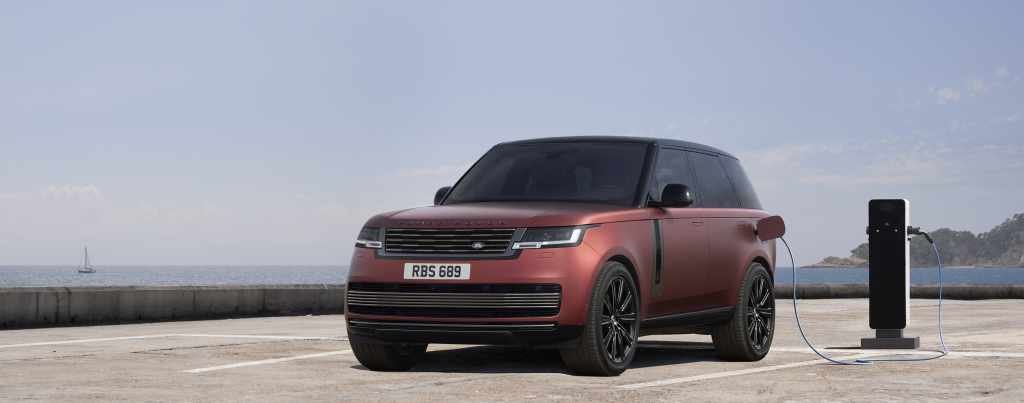Familiar fresh: New Rangie detailed
/Said to be ‘informed by 50 years of evolution’, the first all-new Range Rover since 2013 was properly unveiled today - and straight away found favour with Kiwis.
PROMISE of higher levels of refinement, technology and a new platform that as well as allowing the first-time option of seven seats is also electrification-friendly.
In a nutshell, that’s the new generation of the highest-brow and most expensive vehicle in Land Rover’s catalogue. It’s a recipe that appears to have instantly resonated with Kiwis, with Jaguar Land Rover New Zealand reporting tonight that it has taken 64 orders in the hours since the car’s official unveiling this morning (NZ time).
The car’s international reveal, conducted in the United Kingdom, delivered no surprises in respect to the design – thanks to images from Land Rover having been leaked almost a week ago – and there has been plenty said in past months about some (but not all) of the powertrains and the vehicle’s all-new platform, called ‘MLA Flex.’
However, the maker has filled in the gaps on much else, from New Zealand market availability – first units are expected mid-2022 – to all models having four-wheel-steer, plus there’s more lowdown on the trim levels and the electrification programme. Basically, the big news on the last is that a fully-electric Range Rover is due to arrive in 2024, as the first of six new wholly battery-dedicated products, with several plug-in hybrids preceding it.
The full battery upload will ultimately be the beginning of the end for the continued provision of combustion engines, but fear not petrol and diesel heads … it’ll keep drinking hydrocarbons for some years yet.
As has been previously mentioned, Land Rover is not keen to stop provisioning the model with the V8 petrol power that has synonymous with the type since day one. Though now, being a BMW engine, this incoming twin turbo 4.4-litre (from the X5 and X7) is the only powerplant that’s not developed in-house.
Also special for being the first turbocharged eight cylinder used by a Range Rover, the 390kW/750Nm V8 lends the fastest 0-100kmh time (4.6 seconds using launch control) and is one of two petrol choices at launch, the other being a carryover 3.0-litre mild hybrid turbocharged inline six with 295kW/550Nm (identified by the P400 badge).
It’ll also start its life journey with a 3.0-litre turbodiesel that comes in two versions, one (D300) producing 220kW/650Nm and the other (D350) making 257kW/700Nm respectively.
Those six-cylinder engines come from Jaguar Land Rover's Ingenium family, with turbocharging and 48-volt mild hybridisation. The diesels are also already used in the Defender, Discovery and Range Rover Sport.
The PHEVs appear set to be in production from late 2022. These take a 38.2kWh battery and a 105kW electric motor.
The base P440e form, output is rated at 323kW combined, while the more export-likely plug-in flagship P510e, with the 294kW P400 six-cylinder engine, makes a cumulative 375kW and 700Nm. Either way they claim low emissions and up to 80 kilometres of ‘real-world’ electric-only driving range (or 100km according to official testing protocols).
‘MLA Flex’ is quite different to the D7 platform that underpins the Discovery and Range Rover Sport and the Defender’s heavy-duty D7x chassis. The structure is constructed from 80 percent aluminium, along with high and ultra high-tensile steel in certain areas for additional strength and rigidity.
The model will launch in SE, HSE, Autobiography, First Edition and SV variants.
The Autobiography will also be available in long-wheelbase format, with the Autobiography LWB available as a seven-seater – a first for the type. These are the most affluently-outfitted editions.
Like previous generations, the vehicle promises to be capable off road, with up to 295mm of ground clearance and 510mm of articulation through Land Rover's familiar air suspension and Terrain Response 2 off-road traction control system.
It has the latest Pivi Pro interface, controlled via the central 13.1-inch touchscreen and the 13.7-inch digital cluster behind the steering wheel. Swank and clever clogs features include Amazon Alexa voice control integration, over-the-air update functionality, a 1600-watt Meridian sound system, (exterior) noise cancellation and cabin air purification.
As for the shape? Highly derivative it might be, but Land Rover’s design guru Gerry McGovern (above) is happy with that, citing that his intention was for a model that should b defined by three lines that can trace their origins back through the generations; the falling roofline, strong waistline and rising sill line.
Lands Rover says these trademark features combine with a characteristically short front overhang and a distinctive new boat tail rear – complete with practical split tailgate – to create an elegant profile that “conveys Range Rover’s peerless presence.” Flush glazing, hidden-until-lit lighting and precise detailing create the impression that the vehicle has been milled from solid. And as much as it looks utterly brick-like, the cited drag coefficient of 0.30 is said to make it “the most aerodynamically efficient luxury SUV in the world.”
New Zealand-specific pricing and equipment is not yet being discussed publicly, but JLR NZ has advised media that to secure the deposits taken from pre-orders, it provided customers with pricing for “limited one-off launch vehicles.” It says the official New Zealand range of vehicles and relevant pricing “will be shared along with other details in the coming months.”
Today’s order interest is being described as a significant achievement that sets a new national record for orders taken at reveal.
In commenting on this, JLR NZ chief executive Steve Kenchington said: “A phenomenal effort not only from the JLR design and engineering teams but also from our local retailers. This morning’s new Range Rover reveal is already an incredible success, reinforcing our statement that this is the most desirable Range Rover ever built.
“From this morning’s success, we expect the number of pre-sales to increase over the following several days.”



















